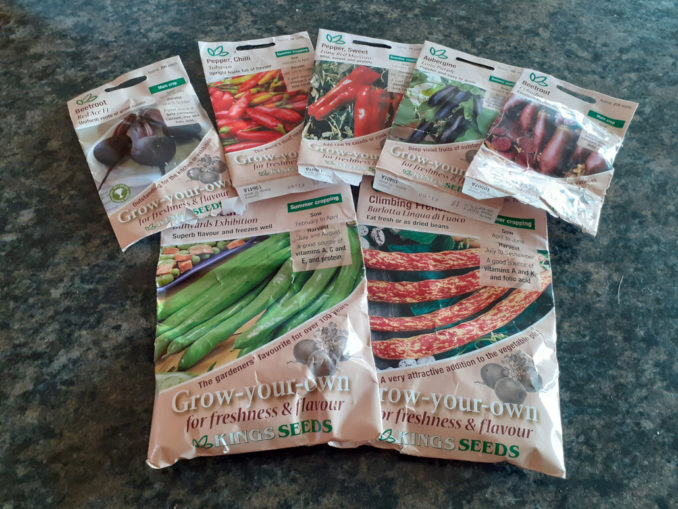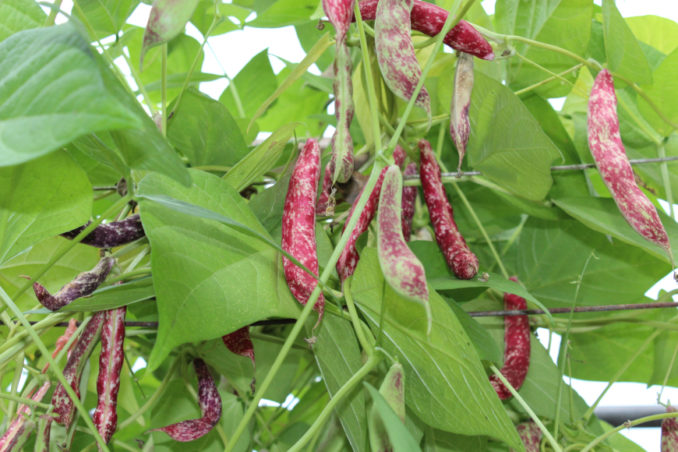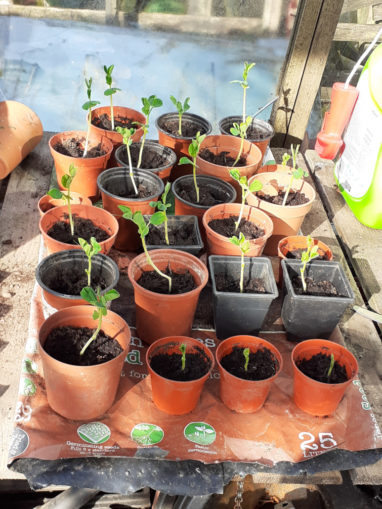Alongside the onerous but rewarding task of preparing the ground for planting there are other jobs requiring the rough gardeners attention before the season gets into full swing. Being a Yorkshire man by birth, if now a Cumbrian by circumstance, means I’m always on the lookout for a bargain or even a freebie. Most packet seeds have far more product in them than a “grow to eat” gardener will use in a season, though they’re generally good for at least two years if kept in their packets and stored in a cool, dry place. I keep mine in a tin and always clear the out of date ones out every year, usually at the end of the season, making a mental note of any I need to replace. This ensures (if that makes sense) that I get the best from a packet of seeds. I have tried growing with seeds past their use by date with very limited success. Seeds needn’t be expensive, both B&M and Home Bargains carry seeds, seed potatoes and onion sets. I always buy my sets from B&M and they always produce great results. Similarly I’ve had excellent results with their seed potatoes.

© Colin Cross, Going Postal 2020
I don’t generally buy tomato seeds, although I did buy a decent quality Italian variety this year, which hopefully will produce some fruit this season whilst it hardens up to the more northerly climate. I also brought some seed home from Zakynthos, harvested from the garden of the apartment where we stayed. I grow Gardeners Delight, mostly for soup and two or three plants of up to five other varieties for taste. This year I’m growing the Italian (St. Pierre), a small yellow plum (from Devon), the Greek variety and a red plum called Red Alert. I harvest the seed from my main variety at the height of the season, when the fruit is ripe. I dry it off, wrap it in kitchen roll and store it in the fridge in an envelope. It has always germinated. If I have some success with the new varieties I’ll take seed from them in the same way.

© Colin Cross, Going Postal 2020
I bought new broad beans, runners, Borlotti and french climbers two years ago but I always let several pods on each plant dry on the vine, they become viable seed, the ones I don’t use are either eaten or disposed of, there’s always, hopefully, plenty of replacements. The area that I showed as “dug over” last week has now been made ready for the beans and peas.

© Colin Cross, Going Postal 2020
Although the instructions on many seed packets will tell you to plant directly into the ground I never do. Apart from potatoes and onions I always sow in trays. It’s a little bit fiddly but it saves on both wasted seed and the always tedious “thinning out”. I sow such things as chili, peppers, aubergines, courgettes etc. singly and usually in those small trays that plug plants are sold from garden centres in. Lettuce and leeks I sow more heavily and then carefully separate them before planting in prepared rows, when they’re strong enough.

© Colin Cross, Going Postal 2020
I always wash out my trays with a mild solution of Jeyes Fluid which disinfects against possible bacterium, parasite eggs etc., before fully rinsing them under running water to ensure no lingering disinfectant can taint the compost. For propagation I use 4 parts purpose compost, mixed with 1 part potting compost and 1/4 part organic chicken fertiliser (roughly), I create this mix in a cleaned out fertiliser bag and leave it to ferment for a couple of weeks before I need it. I suppose that a similar mix, using other fertilisers or even home made compost would do a similar job. I do have a compost heap but because I have access to farm produced muck I generally save it for spreading around the tomatoes as they grow on.
Tomatoes, peas and beans germinate best when deprived of light but kept damp and reasonably warm, 18-20 degrees centigrade is about right. I use the airing cupboard, but I need to be careful not to spill any compost, that’s almost a hanging offence. Once germinated I generally pot on into larger individual containers (peas, beans, tomatoes and anything bushy) or transplant directly into prepared ground or my raised salad bed (beets, leeks, lettuce etc.).

© Colin Cross, Going Postal 2020
Once I think that the seedlings are strong enough to plant on I simply make a hole (in the case of beans and peas along the wire mesh) and plant them about 12 inches apart for beans and 6 inches apart for peas. Larger plants such as chillis, peppers and aubergines I plant in prepared rows, with courgette and, hopefully squash this year planted separately as they do require more room. The yellow courgette (Shooting Star variety), which,IMO, is a better vegetable than the general green, isn’t as “leafy” as some and can be trained to grow upwards, handy if you’re short of space. Next time we’ll look at potting on and planting out amongst other things. Millie, my foster Border Terrier, has proved her genetic instincts are still intact this week. Rabbits had made their way into the house, we currently have what can only be described as a plague of them in the surrounding fields, but she’s dispatched two already and, by the way she’s continually trying to sniff them out, she’s hungry for more kills.
Happy Gardening.
© Colin Cross 2020
The Goodnight Vienna Audio file



